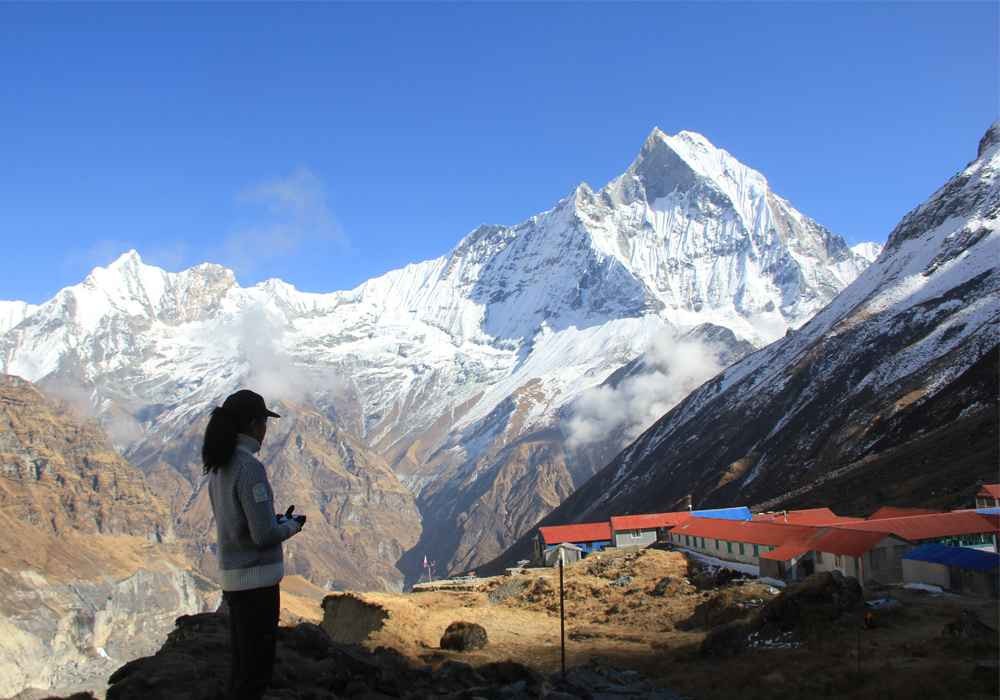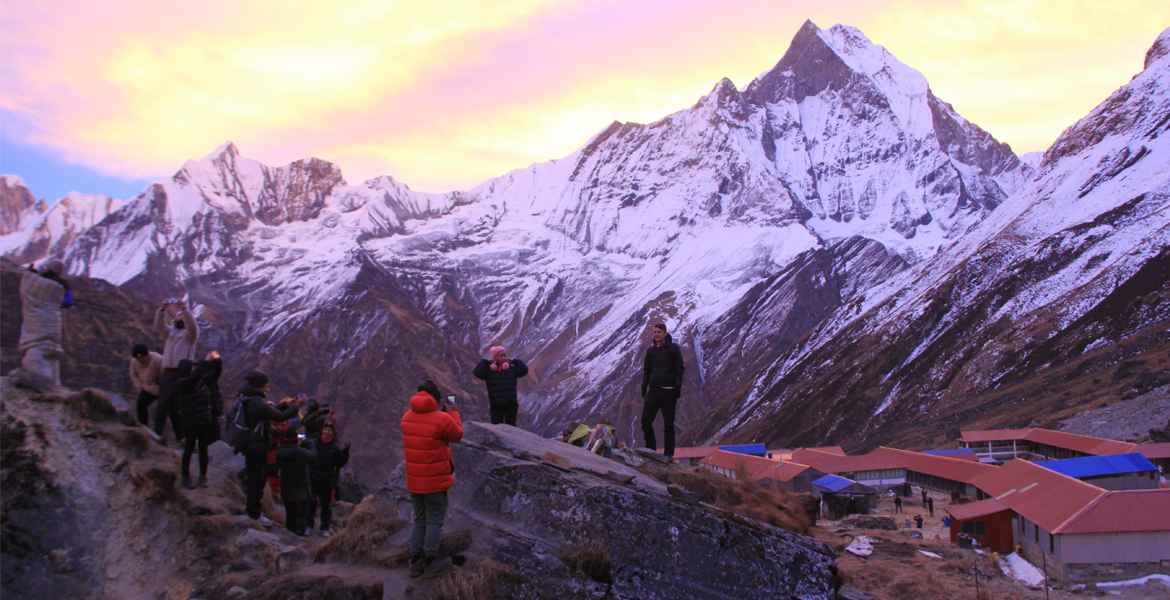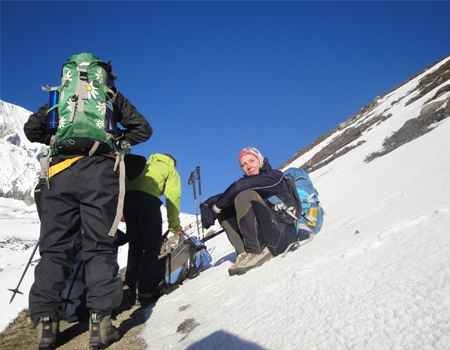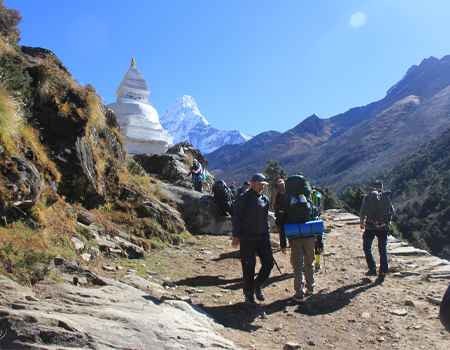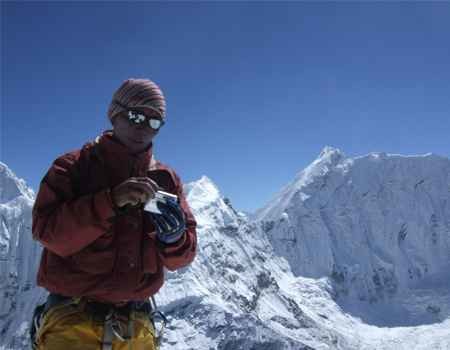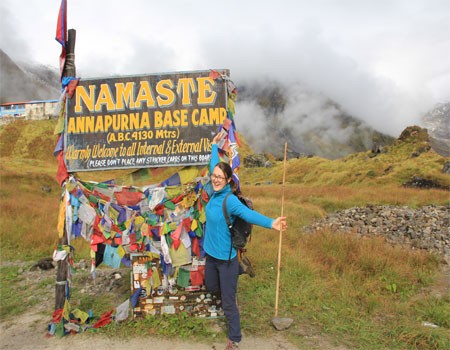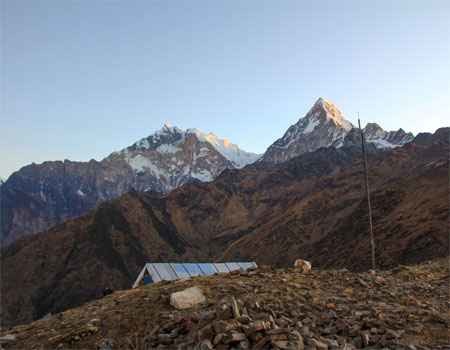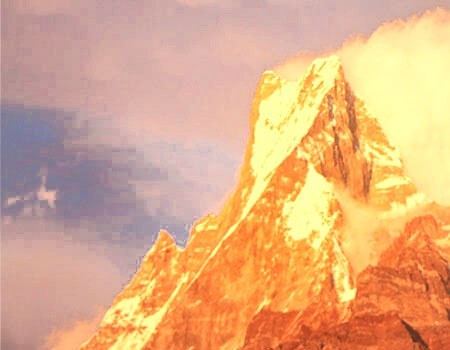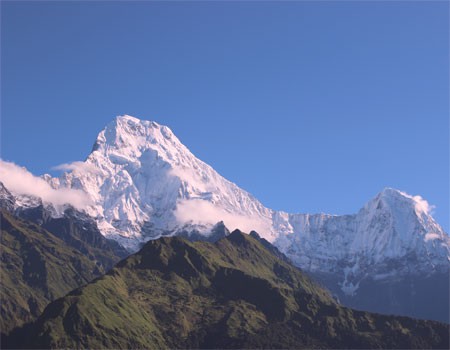The Annapurna Base Camp (ABC) trek is one of the most breathtaking journeys in the Himalayas. It immerses you in diverse landscapes, stunning views, and local culture. However, the trek is both rewarding and challenging, calling for careful preparation and the right gear. Below is a comprehensive and unique guide to help you pack wisely for your adventure, making sure you have everything you need and nothing you don't.
Annapurna Base Camp Packing List: Why Preparing Matters
Packing for the ABC trek is not just about carrying items; it's about equipping yourself to face changing altitudes, weather conditions, and physical demands. Given the trek's remote and varied terrain, being properly packed is essential for your safety and comfort. This list addresses the essentials under separate categories, so you can easily check off your items and feel confident as you set out on an adventure trip.
Book your trek to Annapurna Base Camp with us and start packing!
Trekking Equipment Checklist
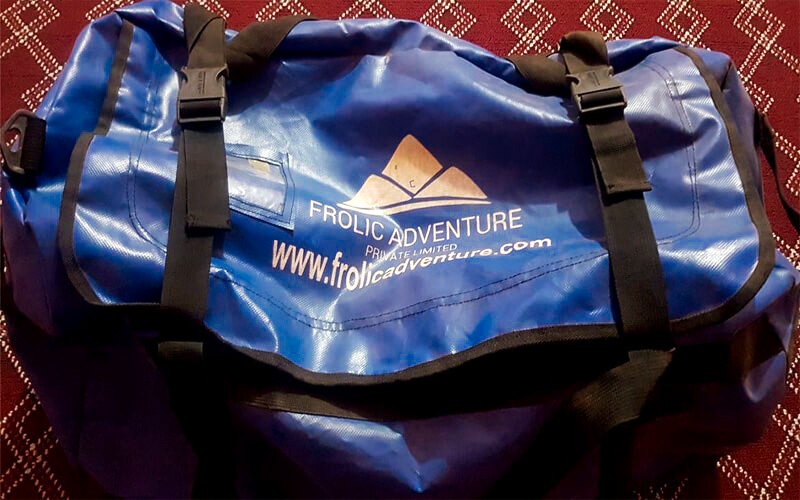
Main Bag to pack trekking gear
Before you start stuffing your bag, think about efficiency, weight, and necessity. Let's break down the must-have trekking equipment for the Annapurna Base Camp:
- Backpack (50-60L): Spacious enough for all your gear, with padded straps and a rain cover.
- Daypack: A lightweight bag for essentials during short hikes or acclimatization strolls.
- Sleeping bag: Rated to at least -10°C; reliable warmth is invaluable during cold Himalayan nights.
- Trekking poles: Help with balance, reduce knee strain, and provide support on steep or uneven trails.
- Down jacket: For warmth at higher altitudes.
- Thermal base layers: These regulate your body temperature and wick moisture away.
- Layered clothing: Combines base, mid-layer, and shell to adapt to variable weather.
- Waterproof jacket & rain gear: Essential for unpredictable mountain showers.
- Hiking boots: Sturdy, broken-in, and waterproof.
- Trekking socks (wool): Several pairs to prevent blisters and keep feet warm and dry.
- Headlamp: For early starts, late arrivals, or midnight trips to the bathroom.
- Water bottle or hydration pack: Staying hydrated at altitude is crucial.
- Sunglasses: With UV protection to shield your eyes from the glare.
- Crampons: Necessary if trekking during snowy or icy conditions.
- Sun hat/cap: Protects you from sunburn at altitude.
- Lightweight gloves: Shield your hands from cold winds or chilly mornings.
- Swimming costume: Some tea-houses en route have hot springs – don't miss out!
- Portable power bank: Keeps your devices charged in remote areas.
- Water purification tablets: Clean drinking water is not always available.
- Personal first aid kit: For blisters, minor injuries, or altitude-related ailments.
- Toiletries: Travel-sized and minimal.
- Lightweight sandals: For tea-house evenings or resting tired feet.
- Fleece jacket (mid-layer): For added warmth.
- Neck gaiter or buff: Protects from dust, wind, and cold.
Hiking Boots for the Annapurna Trek
Footwear is arguably your most critical investment for this trek. Here's what you should look for:
- Waterproofing: It's common to encounter rain, wet patches, or even snow. Waterproof boots ensure dry feet.
- Ankle support: Reduces the risk of sprains on rocky or uneven trails.
- Break-in period: Never bring brand-new boots. Wear them in well before the trek.
- Grip and sole quality: Deep lugs for traction, especially important for steep or slippery terrain.
- Breathability: Helps avoid sweaty, blister-prone feet.
A pair of well-chosen hiking boots can mean the difference between a comfortable trek and days of discomfort. Bring at least one backup pair of laces.
Sleeping Bag: Your Best Friend Each Night
Tea-houses on the ABC route provide lodging, but bedding can be minimal, especially at higher altitudes. Nights can be freezing, sometimes dropping to -10°C (14°F).
- Choose a sleeping bag rated for cold weather.
- Down-filled bags are warmer and lighter, though synthetic ones are better if rain/condensation is expected.
- Consider a liner for added warmth and hygiene.
- A compression sack keeps your bag compact in your backpack.
- You can hire in Kathmandu, and we will help you to find a good one.
Down Jacket for Nepal Trek: Warmth Without the Weight
The higher you go, the colder it gets, especially at dawn and after sunset. A good down jacket is essential:
- Must be lightweight but insulated.
- Look for a water-resistant outer shell.
- A hooded version adds bonus warmth.
- Compresses easily for packing.
- Synthetic alternatives are decent, but down offers the best warmth-to-weight ratio.
- You can hire it for the trip in Kathmandu. We help you with hiring a down jacket!
Trekking Poles: Support on the Trail
Poles take stress off knees and improve stability on descents and rough terrain. For Annapurna:
- Choose collapsible, lightweight pole sets.
- Poles with adjustable height are great for changing terrain.
- Padded grips reduce hand fatigue.
- Practice adjusting and using them at home before your trek.
Waterproof Jacket: Don't Get Caught in a Downpour
The Himalayas are famous for swift weather changes. A waterproof jacket not only protects you from rain but also blocks wind. Features to look for:
- Genuine waterproofing (not just "resistant")
- Breathable materials to prevent overheating and sweat build-up.
- Under-arm zips for ventilation.
- A hood that fits over a hat or cap.
- Lightweight enough to pack away quickly.
Thermal Base Layers: Foundation of Layered Clothing
Layering is the secret to comfort when trekking in Nepal. Thermal base layers—both tops and bottoms—help you regulate body temperature. Opt for:
- Materials like merino wool or moisture-wicking synthetics.
- A snug but comfortable fit.
- At least two pairs to alternate during the trek.
Trekking Backpack (50-60L): Carry Everything, Comfortably
Your main backpack holds everything (unless you're using a porter service). Key features:
- A 50-60L volume is ideal for most trekkers.
- Padded hip belt and shoulder straps.
- Ventilated back panel.
- Multiple compartments for organization.
- Built-in rain cover is a significant plus.
- We provide you with a duffel for each person if you do not have one at an extra cost (20 USD)
Daypack Essentials: What to Carry Each Day
Even if you have a porter, you'll need a small daypack for daily essentials like below to carry with you during the walk:
- Water bottle or hydration bladder.
- Rain jacket.
- Snacks (nuts, bars, dried fruits).
- Camera and/or phone.
- Sunglasses.
- Headlamp.
- Sunscreen and lip balm.
- Map/guidebook.
- Light gloves and a cap.
A 15-25L lightweight daypack works perfectly for short, daily routes.
Layered Clothing for Trekking: Clothing Systems That Work
The weather on the ABC trek swings from warm valley days to freezing nights. Layering lets you adapt as needed. The three basic layers:
- Base layer: Wicks away sweat (see thermal base layers).
- Mid-layer: Fleece jacket or lightweight down for insulation.
- Outer layer: Waterproof and windproof jacket.
- On the trail: Convertible hiking pants, short- and long-sleeve shirts, plus a buff or gaiter for dust and wind protection.
Always have one dry, warm set of clothes for sleeping.
Trekking Socks: Wool Is King
- Good socks prevent blisters and keep feet warm and dry:
- Choose merino wool or wool blends for insulation and moisture management.
- Bring at least 3-4 pairs.
- Avoid cotton; it retains moisture and leads to blisters.
- Some prefer liner socks under their main pair for further blister protection.
Headlamp for Hiking: Light Your Way
Electrical outages and evening arrivals at tea-houses are common. A headlamp is an indispensable asset:
- LED models last long and are lightweight.
- Carry extra batteries.
- Useful for reading, bathroom trips at night, or early-morning trekking.
Water Bottle or Hydration Pack: Stay Hydrated
Altitude, sun, and exertion make dehydration a significant risk:
- Water bottles (durable and insulated) or a hydration pack (with hose) fit in your backpack.
- 1-2L minimum capacity water sources are not always frequent (2 bottles, or one bottle and one blader)
Sunglasses: Protect Your Eyes
Mountain sun is much stronger due to the elevation. For ABC:
- Choose UV-blocking lenses with wraparound frames for side protection.
- Polarized models reduce glare from snow and ice, especially in winter or spring.
- Sunglass retainer cords are helpful so you don't lose them during wind gusts.
Crampons for the Annapurna Trek (Winter/Snow)
While typically not needed in peak spring/autumn seasons, crampons or microspikes can be helpful if snow is present, especially between Deurali and Base Camp during winter or early spring:
- Choose ones that fit your boots securely.
- Lightweight and easy to put on/remove.
- Practice at home so you're efficient on the trail.
Personal First Aid Kit: Safety First
Medical facilities are remote. Carrying a basic first aid kit is vital:
- Plasters/bandages
- Blister pads
- Painkillers/anti-inflammatories
- Antiseptic cream
- Diamox (for altitude sickness), if advised by a doctor
- Rehydration salts
- Personal medications
- Small scissors, medical tape, tweezers
Sun Hat/Cap: Shield Yourself
A sun hat or cap shields your face, neck, and ears from the intense Himalayan sun. Wide-brimmed models offer added protection. Pair with sunscreen and a neck gaiter for further coverage.
Lightweight Gloves: Small but Essential
Cold mornings and wind at altitude can make you miserable. Lightweight gloves keep hands warm on the move but don't overheat.
Quick-drying fabric is best.
Glove liners under heavier gloves are ideal for frigid conditions.
Swimming Costume: Hot Springs Await
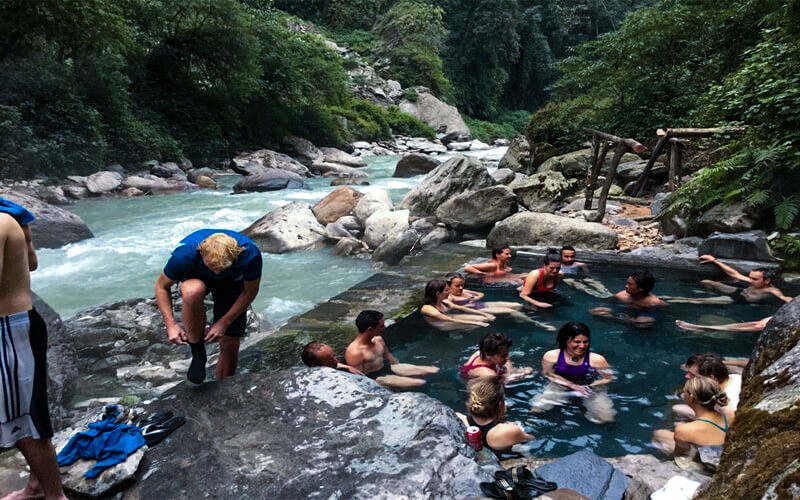
Jhinu Hot Spring
A highlight of the ABC trek is a soak in the natural hot springs at Jhinu Danda. Pack a lightweight swimming costume so you can make the most of this rejuvenating break.
Portable Power Bank: Stay Connected
Electricity in tea-houses is inconsistent, and charging stations sometimes cost extra. Bring a portable power bank to charge phones, cameras, and headlamps.
- Choose 10,000mAh or higher.
- Solar-powered versions can be helpful, but the sun is not always reliable.
Water Purification Tablets: Safe Drinking Water
- Avoid plastic waste by purifying stream or tap water:
- Chlorine dioxide or iodine tablets are compact and practical.
- Water filters or UV pens are good alternatives.
- Always allow recommended time for purification before drinking.
Toiletries for Trekking in Nepal: Minimal but Essential
Go lightweight:
- Toothbrush, travel toothpaste
- Biodegradable soap
- Small tube of sunscreen and lip balm (SPF 30+)
- Quick-dry travel towel
- Toilet paper/tissues (most tea-houses do not provide these)
- Small hand sanitizer
- Wet wipes for basic cleaning
Lightweight Sandals: Evening Relief for Tired Feet
After a day in boots, lightweight sandals are great for tea-house downtime, bathroom trips at night, or for use in showers.
- Choose a durable but collapsible pair.
- Avoid open-toed sandals in high altitudes where it's very cold.
Fleece Jacket: Your Ideal Mid-Layer
A good fleece jacket provides warmth, is breathable, and dries quickly. Use this as your main mid-layer for most trekking days, swapping for a down jacket during freezing evenings or at higher altitudes.
Rain Gear for Trekking in Nepal
Even during the dry season, rain can come unexpectedly:
- Carry a rain jacket and, optionally, waterproof pants.
- A pack cover keeps your bag and gear dry.
- Ponchos offer full-body coverage and are lightweight.
Neck Gaiter/Buff: One Piece, Multiple Uses
A neck gaiter or buff is incredibly versatile—wear it as a neck warmer, hat, face mask, sweatband, or dust shield. It's beneficial on windy passes or dusty trails.
Final Thoughts: Packing Smart for Annapurna Base Camp
Packing for the Annapurna Base Camp trek demands thoughtful planning and practical decision-making. Stick to the essentials, select quality over quantity, and remember that layering is your primary comfort strategy. By following this guide, you’ll trek lighter, stay healthier, and enjoy the adventure of a lifetime.
Happy trekking—may the Himalayas greet you with clear skies, awe-inspiring views, and memories to treasure forever!
Are you looking for the best trekking operator for the Annapurna Base Camp? Don't think much! Book your trip with us now!
